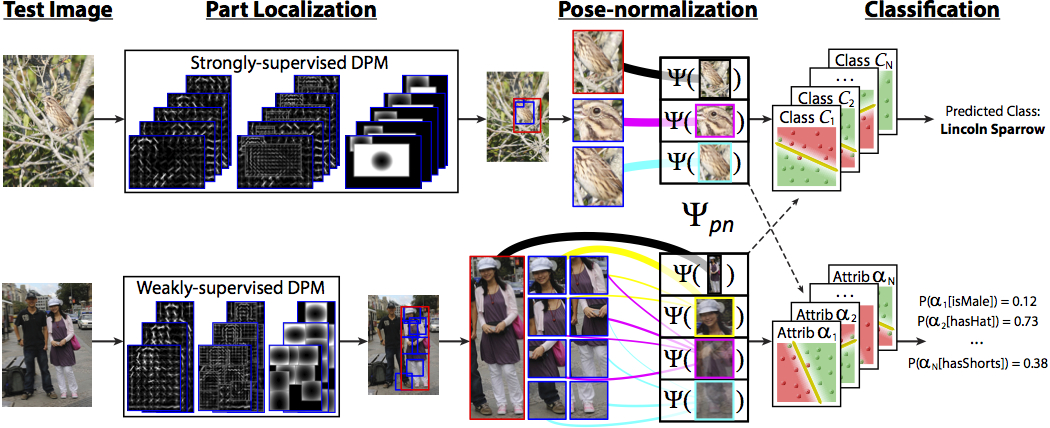
Abstract
Recognizing objects in fine-grained domains can be extremely challenging due to the subtle differences between subcategories. Discriminative markings are often highly localized, leading traditional object recognition approaches to struggle with the large pose variation often present in these domains. Pose-normalization seeks to align training exemplars, either piecewise by part or globally for the whole object, effectively factoring out differences in pose and in viewing angle. Prior approaches relied on computationally-expensive filter ensembles for part localization and required extensive supervision. This paper proposes two pose-normalized descriptors based on computationally-efficient deformable part models. The first leverages the semantics inherent in strongly-supervised DPM parts. The second exploits weak semantic annotations to learn cross-component correspondences, computing pose-normalized descriptors from the latent parts of a weakly-supervised DPM. These representations enable pooling across pose and viewpoint, in turn facilitating tasks such as fine-grained recognition and attribute prediction. Experiments conducted on the Caltech-UCSD Birds 200 dataset and Berkeley Human Attribute dataset demonstrate significant improvements over state-of-art algorithms.
Paper
Ning Zhang, Ryan Farrell, Forrest Iandola, and Trevor Darrell. "Deformable Part Descriptors for Fine-grained Recognition and Attribute Prediction." International Conference on Computer Vision (ICCV), 2013.
Download (PDF)
Download Code (TAR)
Download Code (ZIP)